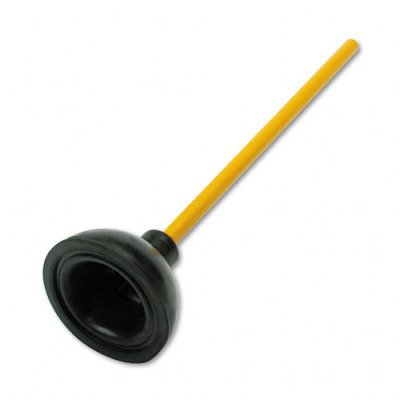Using Plungers for Success
Pick up hints & tips for proper plunging technique
Forming Airtight Seals
Plungers work in both directions. They move water back and forth inside the pipes, breaking up the blocking material into smaller bits until the clog can no longer hold itself together.To do this, an airtight seal must be formed where the plunger meets the plumbing. Any leaks will mean at best an ineffective & noisy plunging and at worst a squirt of sewage back towards the user.
Maintaining this seal while the plunger is worked up and down, for as many as a dozen strokes or for as long as thirty seconds, is the most important consideration, and is why there are so many differently shaped plungers on the market. Hopefully you have the right plunger for your drain. If you don’t maybe you can still make it work.
- Some bell and bellows-plungers are reversible, and suited for both sink and toilets
- Surround drains in floors and wide basins with a twisted wet towel when using a ball-plunger
- A small amount of petroleum jelly around the lip of the plunger or around the drain can help seal tiny but troublesome cracks
- Hold stiff rubber or plastic plungers under running hot water to free them up for easier plunging

No comments:
Post a Comment